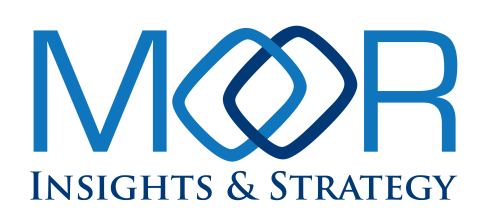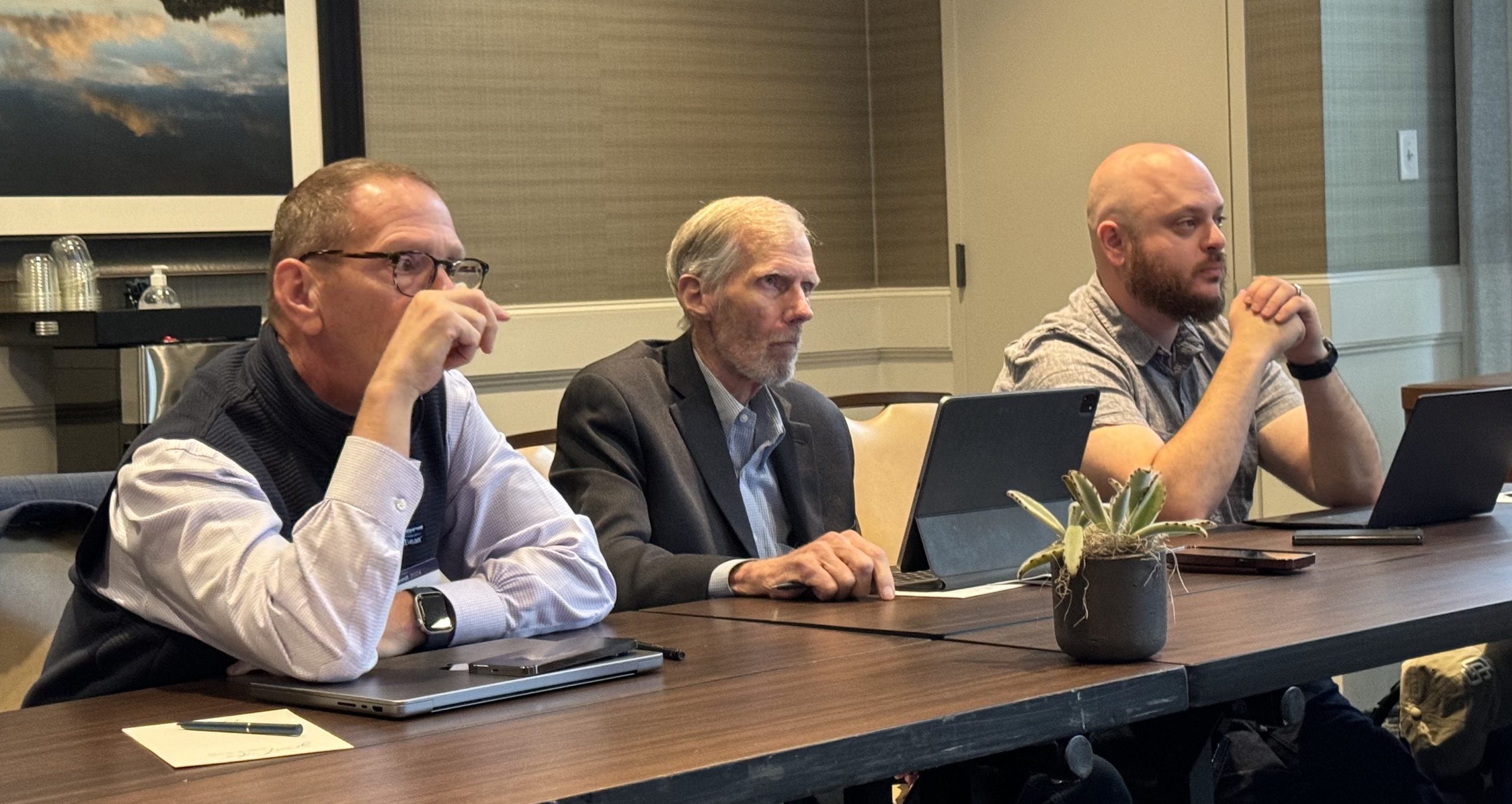
Welcome to this edition of our Weekly Analyst Insights roundup, which features the key insights our analysts have developed based on the past week’s events.
Moor Insights & Strategy is headquartered in Austin because that’s where I’ve lived for a long time; although more of our staff lives in the Austin area than anywhere else, we are a fully virtual firm with members who live in California, Florida, Massachusetts, and Virginia as well as Texas. For as much as I believe in the power of remote and hybrid work, there’s also no substitute for spending time with each other face to face. That’s why I was glad to attend the annual Dell Tech Analyst Summit last week with my colleagues Matt Kimball, Paul Smith-Goodson, and Anshel Sag, analysts from different generations who represent a wealth of experience, and who each bring their own perspectives to the work we do.

This week, Mel and I will be in New York for a BIG event we are sworn to secrecy about for now, but that we will let you in on soon. We’ll also be catching the BoxWorks conference virtually. Robert will be in Scottsdale for the Veeam Analyst Summit.
As touched on above, last week, Matt, Anshel, Paul, and I attended the Dell Tech Analyst Summit in Austin. After the Dell event, Anshel hopped on a plane across the pond to spend some time with Qualcomm in Manchester, England, to get an update on Manchester United’s Snapdragon partnership. Meanwhile, Jason was in sunny San Diego for the Apptio TBM Conference (discussed below) and some tacos.
At the end of this week, our entire team is convening in Austin for a company-wide strategic planning session focused on the new year. (Because of this, it will be two weeks until our next installment of Analyst Insights.) As we grow, we’re committed to delivering the highest caliber research and advisory services in the industry. In the coming months, we’re excited to introduce you to new team members and share updates on our progress. We always value your feedback and look forward to your continued partnership.
Read more about strategically significant tech trends and events in this week’s Analyst Insights. I hope you have a rewarding week!
Patrick Moorhead
———
Our MI&S team published 11 deliverables:
Over the last week, MI&S analysts have been quoted in multiple top-tier international publications with their thoughts on Broadcom, Celona, Freshworks, Intel, Nvidia, AI, earnings, and the Dow Jones Industrial Average change in the semiconductor segment. Patrick appeared on Yahoo! Finance Morning Brief to discuss Qualcomm Q3 2024 earnings.
MI&S Quick Insights
Last week I attended the annual TBM Council Conference in San Diego. TBM stands for Technology Business Management, which is a movement to demystify and optimize IT spending—leading to improved business results. While that may sound like it’s strictly FinOps, in fact it goes well beyond FinOps and covers the business and resource metrics to facilitate a transparent and predictable digital supply chain. What makes it so great is that TBMC is a user conference that keeps the focus on the present state and the solution space—it is not a product and technology extravaganza. What stood out was the common origin story of how companies adopted TBM solutions. It seems to commonly start with a surprise budget-busting bill that nobody can quite account for. However, once the right level of discovery happens, not only are financial surprises minimized, but other areas also emerge such as cross-project resource conflicts or smarter product architecture. The takeaway was twofold: For users, TBM as a framework is worth checking out. For vendors like Apptio, by establishing a very clear view and driving engagement on a solution space, they are able to more effectively position their solutions in the TBM space.
Anthropic is having its moment in the sun with developers. Last week I mentioned that both GitHub and AWS made announcements around their respective AI-powered IDEs. But within those announcements, it was also revealed that Anthropic’s Claude 3.5 Sonnet was being used as either the LLM or a major new LLM option. Sonnet is a deeper-thinking model without a degradation in performance from the previous generation. It’s another example of LLMs being packaged to meet specific situations; for developers, it should be a welcome offer since devs are prioritizing accuracy over speed. But for those who need speed, Antropic happens to have a different model available.
JFrog has been a key partner of GitHub for a while. The combination of curating source code and binaries tees up what is a very complementary partnership. But at GitHub Universe last week, JFrog and GitHub announced they are working together on a more security-driven GitHub Copilot IDE. JFrog has launched integration with GitHub Autofix so devs can scan their code pulls as part of the development workflow using JFrogs own SAST security capabilities. This is a great way to enable devs to intercept problems even earlier in the process, reducing the cost and complexity of future remediation. For more on this, you can read JFrog’s blog post about the integration here.
Last week I attended the annual TBM Council Conference in San Diego. TBM stands for Technology Business Management, which is a movement to demystify and optimize IT spending—leading to improved business results. While that may sound like it’s strictly FinOps, in fact it goes well beyond FinOps and covers the business and resource metrics to facilitate a transparent and predictable digital supply chain. What makes it so great is that TBMC is a user conference that keeps the focus on the present state and the solution space—it is not a product and technology extravaganza. What stood out was the common origin story of how companies adopted TBM solutions. It seems to commonly start with a surprise budget-busting bill that nobody can quite account for. However, once the right level of discovery happens, not only are financial surprises minimized, but other areas also emerge such as cross-project resource conflicts or smarter product architecture. The takeaway was twofold: For users, TBM as a framework is worth checking out. For vendors like Apptio, by establishing a very clear view and driving engagement on a solution space, they are able to more effectively position their solutions in the TBM space.
Anthropic is having its moment in the sun with developers. Last week I mentioned that both GitHub and AWS made announcements around their respective AI-powered IDEs. But within those announcements, it was also revealed that Anthropic’s Claude 3.5 Sonnet was being used as either the LLM or a major new LLM option. Sonnet is a deeper-thinking model without a degradation in performance from the previous generation. It’s another example of LLMs being packaged to meet specific situations; for developers, it should be a welcome offer since devs are prioritizing accuracy over speed. But for those who need speed, Antropic happens to have a different model available.
JFrog has been a key partner of GitHub for a while. The combination of curating source code and binaries tees up what is a very complementary partnership. But at GitHub Universe last week, JFrog and GitHub announced they are working together on a more security-driven GitHub Copilot IDE. JFrog has launched integration with GitHub Autofix so devs can scan their code pulls as part of the development workflow using JFrogs own SAST security capabilities. This is a great way to enable devs to intercept problems even earlier in the process, reducing the cost and complexity of future remediation. For more on this, you can read JFrog’s blog post about the integration here.
Konecta and Google Cloud have established a three-year strategic partnership to integrate Google Cloud’s AI and cloud technologies into Konecta’s customer experience solutions. This collaboration seeks to enhance Konecta’s Digital Unit with AI-powered tools and services, including implementing Google Cloud’s Customer Engagement Suite and generative AI solutions. As part of the partnership, Konecta will transition its workforce to Google Workspace and certify up to 500 engineers in Google Cloud technologies. These initiatives are designed to improve operational efficiency, enable the development of advanced CX offerings for clients, and strengthen Konecta’s position as a provider of AI-driven customer service solutions. Konecta and Google Cloud expect this alliance to facilitate more personalized and efficient customer interactions for businesses and contribute to their digital transformation objectives.
Twilio has partnered with Google Cloud to integrate generative AI into its customer engagement platform. This enables Twilio users to deploy AI-powered solutions such as virtual agents and interactive chatbots to enhance their customer service capabilities. By leveraging Google Cloud’s AI tools, including Dialogflow, businesses can automate responses to common inquiries, provide 24/7 support, and efficiently escalate complex issues to human agents. Early results from this collaboration are promising. Google says that a major automotive manufacturer using its “Destination Assist” feature has reported an 18% to 20% reduction in agent call times. While Google did not include resolution rates for this particular use case, this type of reduction in call times and always-on support will likely lead to higher resolution and happier customers.
Freshworks has announced a significant restructuring that will result in layoffs affecting approximately 13% of its global workforce, equating to about 660 employees. This move surprised many, particularly since the company recently reported strong fourth-quarter financials for 2024, demonstrating a 22% year-on-year increase in revenue. Most of the positions affected by these layoffs are based in India and the United States. CEO Dennis Woodside described this decision as a difficult but necessary step to streamline operations and focus on the company’s key strategic areas: employee experience, artificial intelligence, and customer experience. Following the announcement, the company’s share price surged by 15%, and Freshworks unveiled a substantial $400 million stock buyback program, indicating a strong financial position despite the layoffs.
While Freshworks is framing this as a strategic realignment, the increasing role of AI could be a contributing factor to these layoffs. Overall, this decision reflects a broader trend in the tech industry, where companies are optimizing their workforces in response to changing business objectives and the rise of AI. It will be interesting to observe how this restructuring impacts Freshworks’ growth trajectory in its key strategic areas moving forward.
I write this as I am finishing up the final day of Dell’s analyst event—Dell Tech Summit. While this was an NDA event, so the details are secret, there are a few general takeaways I want to share:
- If you thought AI hype had peaked—think again. However, unlike some other hype cycles, AI is driving a lot of revenue and completely disrupting enterprise IT organizations.
- Dell’s AI journey is an amazing story. I’m convinced this experience puts the company in a stronger position for helping its customers evolve.
- Partners are critical to successfully delivering AI transformation projects to the market
- We are still very early in the AI game. Very, very early.
- There is opportunity for every company in the AI supply chain. Dell partners. Dell suppliers. Frankly, Dell competitors.
2025 is going to be a fun year in tech and AI. If you are an IT solutions vendor: better understand where you fit in the enterprise AI journey and start aligning portfolios and GTM efforts. If you are an enterprise organization: don’t start this AI journey on your own. Learn from those that have gone through this before.
Most of us in tech are familiar with software-defined storage, software-defined networking—even software-defined infrastructure. How about software-defined silicon? NextSilicon, a semiconductor company based in Tel Aviv and Minnesota, has launched its Maverick-2 intelligent compute accelerator (ICA). This silicon, which in earlier versions has been powering HPC clusters for a number of years, has been tuned to also support AI and vector database operations, delivering a performance-per-watt advantage of 4x over GPUs while cutting operational costs in half.
Isn’t this just a fancy name for an FPGA, you say? Not really. With Maverick-2, real-time application telemetry feeds the silicon, tuning its characteristics for optimal performance. If you are familiar with Kalman filtering for voltage/current regulation, a very crude comparison can be drawn.
My thoughts: There is a really interesting play here with Maverick-2. As datacenters struggle with power and space constraints, such a piece of silicon enables a bit of platform flexibility that can optimize itself in real time for a variety of workloads. NextSilicon is not going to use Maverick-2 (or -3, -4, etc.) to displace the likes of NVIDIA or AMD for AI training. Nor is it going to replace those companies or Qualcomm, Untether, or others for AI inference. However, NextSilicon has found a niche for itself. Further, the way the company is approaching what I would call autonomous programmability will have a longer-term impact on the silicon market in general.
The Ultra Accelerator Link (UALink) Consortium was officially incorporated last week. This group, which includes some of the biggest tech companies in the world, is focused on establishing standards and specifications for GPU-to-GPU connectivity. What problem is this solving? In larger AI and HPC environments where GPUs are used to perform complex computations, the design of legacy infrastructure can force GPUs to rely on CPUs that can become bottlenecks. As you can imagine, this introduces a lot of latency into the equation.
To solve this, NVIDIA developed a fabric called NVLink to enable its GPUs to bypass the CPU as a controller or head node. This allows NVIDIA-based environments to be more performant. However, NVLink was developed by NVIDIA for NVIDIA. UALink aims to take this concept and make it open for all: a universal set of standards and specifications that enable accelerator-to-accelerator connectivity at scale.
My thoughts: The broad support for UALink (from AMD, Intel, Meta, HPE, Astera Labs, AWS, Microsoft, and others) tells me that this consortium has legs and will find adoption among the customers that have immediate needs. I expect to see other big players such as Dell and Broadcom to join in as contributors at some point. See my full analysis on Forbes.
Should enterprises be concerned about cyberattacks from AI agents? AI’s advanced capabilities can enhance the sophistication and scale of malicious attacks, making them more difficult to detect and defend against. This is especially concerning given AI’s ability to automate and personalize attacks on a large scale. Potential threats include AI-powered phishing, deepfakes, and malware that can bypass traditional security measures.
Here are some key reasons why AI poses a cyberthreat to enterprises:
- Advanced Attack Vectors — AI can analyze large datasets to exploit vulnerabilities and deliver highly targeted attacks.
- Automated Attacks — AI enables rapid, large-scale attacks that are difficult to contain due to automation.
- Evasion of Detection Systems — AI can create and modify malware to bypass traditional security measures, complicating detection.
- Data Manipulation and Poisoning — Attackers can use AI to corrupt training data, impacting security models and resulting in missed threats or false positives.
- Accessibility to Malicious Actors — The availability of AI tools allows even attackers who are less skilled to deploy AI-powered attacks.
In response, here are some mitigation strategies for enterprises:
- Develop AI-powered defenses to detect and respond to sophisticated threats in real time.
- Monitor AI systems closely, particularly the behavior of AI agents, to detect potential malicious activity.
- Implement employee awareness training to help staff recognize and report AI-driven threats.
- Strengthen data protection and privacy measures to safeguard sensitive information.
It’s important to stay updated on this topic, as the integration of AI agents into various applications will continue to expand, bringing with it new challenges.
By all measures, Juniper Networks is executing well financially, beating expectations for both top-line revenue and profitability with its recent 3Q 2024 earnings announcement. Chief executive Rami Rahim credits the company’s support of front-end and back-end AI networking for its recent success. Juniper’s reinvigorated focus on enterprise networking and its depth in AI help explain why HPE is acquiring the company, with an expected close of the deal anticipated soon. The combination of both companies’ engineering resources and complementary portfolio coverage of campus, branch, and data center is powerful, which should allow the combined entity to compete more effectively with Cisco and others.
NetSuite has examined emerging trends and made some predictions about ERP as we head into the new year. Enterprises are increasingly prioritizing ERP modernization, with the cloud ERP market projected to expand from $72.2 billion in 2023 to $130.5 billion by 2028. Because ERP systems are so essential for so many enterprise processes, modernizing them can reshape how enterprises operate.
Many enterprises face the challenge of modernizing their operations by transitioning to cloud ERP solutions. Software provider IFS saw strong performance in Q3 2024, with a 30% increase in ARR, driven by a 71% rise in IFS Cloud usage and a 46% growth in cloud revenue. IFS added 90 new clients, introduced AI features in IFS Cloud 24R2, and launched a new module for sustainability management.
Matter, the smart home automation standard from the Connectivity Standards Alliance, just released version 1.4. The new version has some much-anticipated enhancements, including support for many new device types. When the CSA released Matter 1.0 in October 2022, the organization’s leadership promised a regular six-month release cadence, and that’s exactly what they have done. The team has shipped four releases in two years, each with significant improvements in device coverage, ease of use, and functionality. The cumulative expansion of device types is impressive, with version 1.4 adding support for energy management products including solar power, energy storage, heat pumps, water heaters, electric car charging, and time-based orchestration. The CSA was smart to focus device development on a single high level use case—energy—rather than adding a hodgepodge of random devices.
But the most significant version 1.4 enhancement is automating “multi-admin” configurations. Here’s why. Matter’s value proposition rests upon interoperability, and that means enabling devices from any manufacturer to work with any combination of home automation ecosystems—i.e., HomeKit, Google Home, Alexa, or SmartThings. Although previous Matter versions support this feature, the configuration process has been complicated and often confusing. Version 1.4 automates multi-admin configuration by allowing the user to grant permission just once, then Matter automatically adds a new ecosystem. Thus, “Alexa” and “Hey Google” can both turn down your thermostat. This fulfills a fundamental brand promise for Matter. Between now and CES, I’ll write more about Matter’s progress. I’m also doubling down on my prediction that Matter will hit its tipping point in early 2026, becoming the leading smart home connectivity standard for new designs.
A new security feature in iOS 18.1 has made it more difficult for police and other agencies to snoop inside iPhones they’ve confiscated for investigations. This feature is an inactivity timer that reboots iPhones into a more secure state when they haven’t been unlocked for a while. This is a welcome feature for many privacy and security advocates because so many warrantless searches have been conducted on people’s phones. And Apple isn’t the first to implement this, as GrapheneOS for Google Pixel phones already offers this capability.
Workvivo, an employee experience platform acquired by Zoom in 2023, has launched a new suite of tools called “Employee Insights.” This suite is designed to measure and improve employee engagement. Integrated directly into the Workvivo platform, Employee Insights enables organizations to deploy pulse surveys, monitor engagement across 12 key drivers, and analyze results using real-time dashboards.
This solution provides a centralized way to gather employee feedback, particularly from frontline workers who may have limited access to e-mail. Workvivo emphasizes that the platform facilitates actionable insights based on the “listening” data collected, aiming to foster a cycle of continuous improvement. Future updates are expected to include integration with Zoom AI Companion for enhanced industry data analysis and benchmarking capabilities. This launch comes at a significant time for Workvivo, as it was recently named Meta’s preferred migration partner for the discontinued Workplace platform.
I served as a judge for UC Today’s inaugural UC Leaders Awards 2024, which aims to highlight the top professionals in the unified communications (UC) and collaboration space. The judging process was enjoyable, and I learned a great deal about the individual and team contributions to the companies and industries I cover. There were many outstanding applicants this year.
UC Today has announced the UC Leaders finalists, including Craig Walker from Dialpad and Eric Yuan from Zoom for the Innovator of the Year award. Eric Yuan is also nominated alongside Vlad Shmunis from RingCentral for the UC Leader of the Year award. The finalists for the Women in UC Leadership Award include Smita Hashim, chief product officer at Zoom; Christina Hyde, VP of revenue at SkySwitch; Kira Makagon, chief innovation officer at RingCentral; and Aruna Ravichandran, SVP and chief marketing and customer officer at Cisco Webex—quite a powerhouse lineup!
Additional award categories include Industry Influencer of the Year, Rising Star of the Year, The Editor’s Choice Award, and the UC Team of the Year. The award ceremony will be held on November 21, 2024, and will be streamed live on the UC Today website, LinkedIn, and X at 4:00 p.m. GMT / 11:00 a.m. EST. I will be presenting the awards in an Oscars-style format, and I hope you will join us!
People are really loving Apple’s new M4 Mac Mini thanks to its extremely compact size and reasonable price. With an M4 chip, it may be one of the most inexpensive and powerful computers on the market. One of its biggest downfalls, however, is that memory upgrades are extremely expensive, so much so that in some cases it’s cheaper to buy a second Mac Mini than it is to upgrade the RAM. The one upside of this new design is that there is user-upgradable memory; however, there are no known third-party memory products for the device yet, although I expect OWC will offer one fairly soon.
North Korean threat actors have successfully used a combination of phishing emails and social engineering schemes to target cryptocurrency-related business. Cybersecurity solution provider SentinelOne has named the campaign “Hidden Risk”; this complex attack also employs a seemingly benign PDF with fake cryptocurrency news headlines and offers of employment to infect Apple macOS users with a malicious payload. It is a highly sophisticated campaign, one that is difficult to defend against, especially given the extensive grooming of targets over social media. The silver lining in this latest cyberattack is that security operators have access to an incredible amount of real-time threat intelligence shared by Infoblox, Microsoft, Palo Alto Networks, SentinelOne, Zscaler, and others to enable stronger security postures.
AMD’s new 9800X3D CPU is officially on the market and has already sold out. This new CPU is the first to use AMD’s second-generation 3-D V-Cache, which has faster CPU clock speeds, better memory bandwidth, and significantly improved thermals because now the CPU cores sit atop the memory instead of the other way around. While I haven’t had a chance to test this chip fully, the consensus is that its gaming performance is industry-leading, and its handling of multitasking and productivity workloads isn’t far behind—which wasn’t necessarily the case with past processors in this family.
Globant has opened a new office within Intuit Dome, home of the Los Angeles Clippers. This move is part of the two organizations’ ongoing partnership to enhance the fan experience through digital transformation initiatives. The new office includes a “Digital Playground” technology showcase, which the company says it hopes will foster creativity and attract talent while strengthening Globant’s presence in Southern California. This strategy aligns with a growing trend of businesses creating experience centers to demonstrate the potential of their products and services in an engaging environment. These centers provide tangible, interactive experiences beyond traditional marketing, allowing consumers to interact directly with technology and see various real-life use cases.
IBM is partnering with Ferrari’s racing team starting in 2025. This partnership will leverage IBM’s advanced data analytics to improve engagement for fans of Scuderia Ferrari through personalized content and insights that “bring racing enthusiasts closer than ever to the racing team.” IBM will also support Ferrari by using cutting-edge data analysis to enhance performance on and off the track. This newly announced partnership shares several similarities with IBM’s long-standing collaborations with the US Open, Wimbledon, and The Masters. All of these partnerships focus on enhancing fan engagement with premium sporting events—now including Formula 1—through digital platforms, leveraging advanced AI and data analytics to process vast amounts of data for real-time insights. These partnerships also serve as high-profile demonstrations of IBM’s capabilities on a global stage.
The National Football League’s data-driven approach to reducing injuries is showing progress. By analyzing player data with Amazon Web Services, the NFL provides insights to help teams improve training and safety. The league and its teams have also used computer vision and sensors to track head impacts, helping coaches implement injury-prevention strategies.
“When you can integrate and aggregate data across all 32 [teams] for all 53 [players], you have more power in the data that you are generating to model,” said Jennifer Langton, NFL Player Health & Safety Innovation Advisor. With AWS, the NFL can track injuries in real time, automatically linking incidents to specific plays. The league is also working on new tech for full-body tracking to better prevent injuries in the future.
As one example, the redesigned kickoff rule, created in collaboration with AWS, has reduced injury risk. The rule change has led to 32% fewer injuries overall on kickoffs, including no ACL or MCL tears, as player speeds have decreased.
US Cellular informed the FCC earlier this fall that T-Mobile’s acquisition of its wireless operations was essential in ensuring uninterrupted service for its dwindling subscribership. A sticking point is regulatory approval of the transfer of 30% of US Cellular’s spectrum assets to T-Mobile. However, that may be less of an issue now, given the breaking news that AT&T has agreed to purchase over $1 billion worth of US Cellular’s spectrum licenses.
It is an unfortunate situation for US Cellular, signaling the company’s inability to keep pace with necessary infrastructure deployments to support its primarily rural customer base. It is extremely challenging to provide mobility services in remote areas, given lower population densities and longer timelines to recoup investment in radio access network infrastructure. T-Mobile’s acquisition makes sense in many ways, especially given its success in connecting rural America with 5G access that leverages its lower-band spectrum assets.
Forbes Articles Published
- Digging Into the Ultra Accelerator Link Consortium (Matt Kimball, Patrick Moorhead)
- Lenovo Goes All-In On Hybrid AI—Even Software—At Lenovo Tech World (Patrick Moorhead)
- Qualcomm and Arm Trade Jabs Ahead of December Court Case (Patrick Moorhead)
- AMD Launches New CPUs, GPUs and More Across Datacenter, AI and PC (Patrick Moorhead)
- IBM Granite 3.0 Models Points the Way to Enterprise AI at Scale (Patrick Moorhead)
- Meta Extends Llama Support to U.S. Government for National Security (Patrick Moorhead)
Podcasts Published
MI&S Hot Desk Podcast (Melody Brue, Robert Kramer)
Don’t miss future MI&S Podcast episodes! Subscribe to our YouTube Channel here.
Citations
AI & Enterprise / Jason Andersen / BizTech
Can AI Agents Ease Workloads for Enterprises?
Intel / AI Stocks / Patrick Moorhead / Insider Monkey
15 Trending AI Stocks on Latest Analyst Ratings and News
Broadcom / VeloRAIN / Matt Kimball / NetworkWorld
Broadcom launches VeloRAIN, using AI/ML to improve network performance
Celona / 5G / Will Townsend / The Fast Mode
Celona Launches Aerloc to Secure Private 5G for Industrial IT & OT Systems
CHIPS Act in New Administration / Moor Insights & Strategy Analysts / Digitimes Asia
Trump teases shutting down CHIPS Act: what does it mean?
Freshworks / Layoffs / Melody Brue / CIO
Freshworks lays off 660 — about 13 percent of its global workforce — despite strong earnings, profits
Nvidia / Dow Jones Industrial Average Representative / Patrick Moorhead / Data Center Planet
Nvidia Replaces Intel on Dow Amid AI Frenzy
Nvidia / Dow Jones Industrial Average Representative / Patrick Moorhead / The Register
Dow swaps Intel for Nvidia leaving no index free from wild AI volatility
TV APPEARANCES
Qualcomm / Earnings / Patrick Moorhead / Yahoo Finance – Morning Brief
Fed meeting outlook, Qualcomm, Trump tariffs: Morning Brief
New Gear or Software We Are Using and Testing
Kindle Colorsoft (Anshel Sag)
Google Pixel Buds 2 Pro (Anshel Sag)
Google Pixel Watch 3, 41mm (Anshel Sag)
Cisco Desk Pro (Melody Brue)
OnePlus Buds Pro 3 (Anshel Sag)
Insta360 Link2 4K AI Webcam (Anshel Sag)
Google Pixel 9 Pro Fold (Anshel Sag)
Google TV streamer – Matter and Thread features (Bill Curtis)
Various Matter devices (Bill Curtis)
ASUS Zephyrus G16 Gaming Laptop (Anshel Sag)
iPhone 16 Pro (Anshel Sag)
Events MI&S Plans on Attending In-Person or Virtually (New)
Unless otherwise noted, our analysts will be attending the following events in person.
- Veeam Analyst Summit, November 11-13, Scottsdale, AZ (Robert Kramer)
- Box Works / Analyst Summit, November 12-13, San Francisco (Melody Brue – virtual)
- Microsoft Ignite, November 18-22, Chicago (Robert Kramer – virtual, Will Townsend – virtual, Melody Brue – virtual)
- Super Computing, November 18-22, Atlanta (Matt Kimball)
- NTT R&D Forum, November 19-23, Tokyo (Will Townsend)
- Veeam Analyst Summit, November 11-13, Scottsdale, AZ (Robert Kramer)
- Box Works / Analyst Summit, November 12-13, San Francisco (Melody Brue – virtual)
- Microsoft Ignite, November 18-22, Chicago (Robert Kramer – virtual, Will Townsend – virtual, Melody Brue – virtual)
- Super Computing, November 18-22, Atlanta (Matt Kimball)
- NTT R&D Forum, November 19-23, Tokyo (Will Townsend)
- AWS re:Invent, December 2-6, Las Vegas (Robert Kramer, Will Townsend, Jason Andersen, Paul Smith-Goodson, Matt Kimball)
- IBM Strategic Analyst Event, December 9, Boston (Robert Kramer)
- T-Mobile Analyst Summit, December 9-10 (Anshel Sag)
- Marvel Industry Analyst Day, December 10, Santa Clara (Matt Kimball)
- ServiceNow Global Industry Analyst Digital Summit, December 10 (Jason Andersen, Melody Brue, Robert Kramer – virtual)
- Acumatica Summit, January 26-29, Las Vegas (Robert Kramer)
- ZohoDay25, February 3-5, Austin (Robert Kramer, Melody Brue)
- Zendesk Analyst Day, March 35, Las Vegas (Melody Brue)
Subscribe
Want to talk to the team? Get in touch here!






























































































